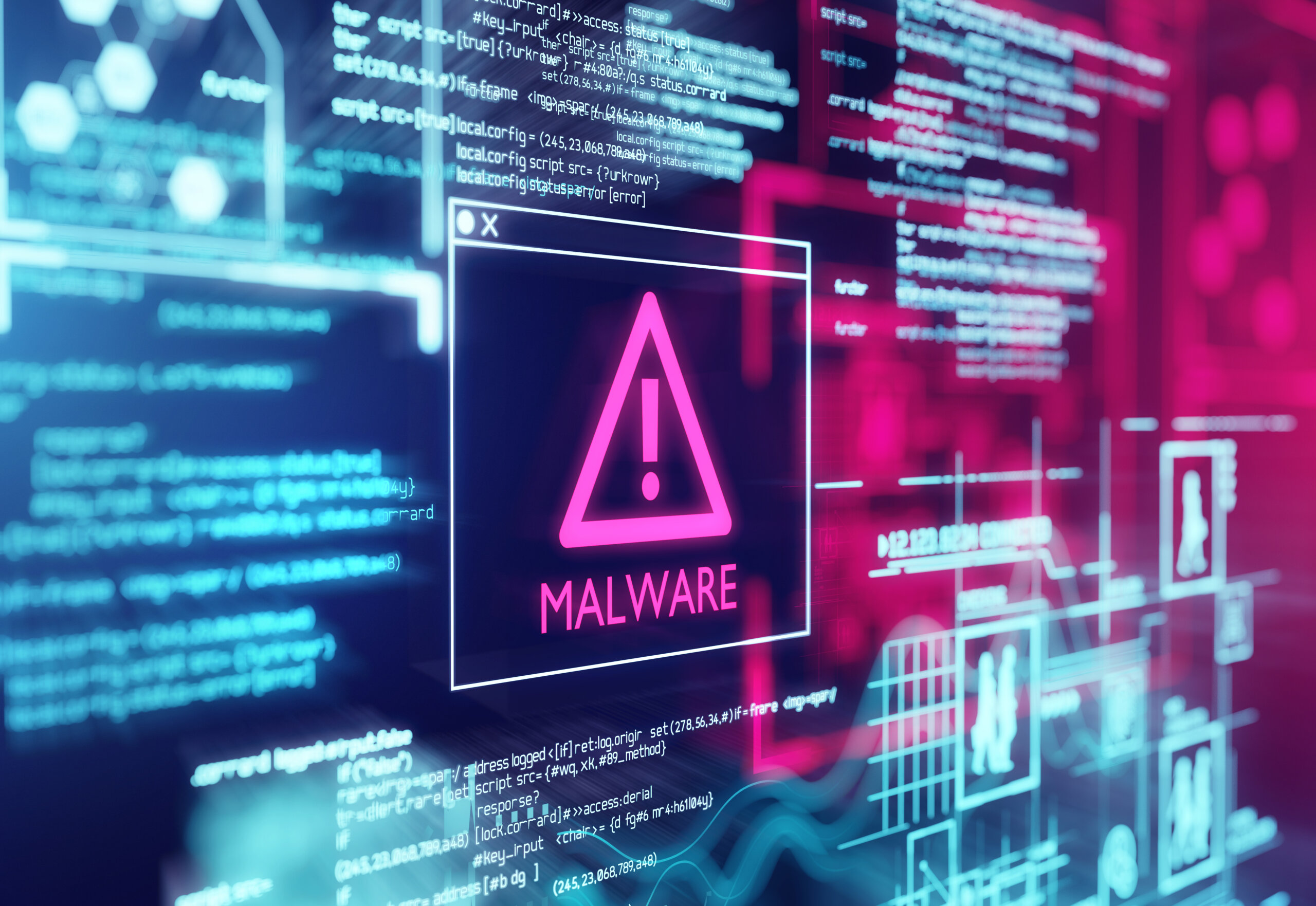What is Malware?
What is Malware?
Malware, or malicious software, refers to any program or code that infects a computer and causes damage to it. Malware is malicious software that targets and seeks to damage, disable, or destroy computers, computer networks, tablets, and mobile devices, often by taking control of a device’s operations. It interferes with the normal functioning of the device. Malware is the umbrella term that covers all malicious software – including adware, ransomware, rootkits, spyware, Trojans, worms, and viruses. Malware is motivated by many different factors and aims to make money, sabotage your ability to accomplish tasks, make a political statement, or simply bragging rights. Malware cannot damage the physical hardware of systems, network equipment, or electrical equipment. Still, it can steal, encrypt, and delete your data, alter or override core computer functions, and track your computer activity without your permission. Malware refers to various malicious software variants, such as viruses, ransomware, and spyware. For malicious software, malware describes a program developed by cyber attackers to cause extensive damage to data and systems or gain unauthorized access. Malware is usually sent through email as a link or file, requiring users to click on the link or open the file to execute the malicious code. Historically, malware has been a threat to individuals and organizations since the early 1970s, when the Creeper virus appeared. Since then, the world has been under attack from hundreds of thousands of different malware variants with the intent of causing an enormous amount of disruption and damage.
How does Malware work?
There are two ways malware spreads itself: either the user unwittingly installs the malware, or the malware exploits a vulnerability, such as those listed on CVE.
- Social engineering attacks, such as phishing scams, are another common delivery mechanism. The only requirement is an infected email attachment disguised as a legitimate message.
- Fraudulent websites and peer-to-peer file-sharing services that appear to provide legitimate software are another way to spread malware.
- Pirated software programs can also install malware.
- The emerging-malware strains use evasion and obfuscation techniques designed to deceive users, cybersecurity professionals, and anti-malware products like Malwarebytes.
- An infiltration technique can be a simple proxy designed to avoid IP attribution or sophisticated polymorphic malware that changes its code to avoid signature-based detection tools, anti-sandbox techniques which allow malware to detect when it is being identified and pause execution, or fileless malware that resides in the computer’s RAM.
- Malware poses a security risk, regardless of whether it steals sensitive information, credit card information, discloses keystrokes or makes cryptocurrency.
For example, malicious programs can be delivered to a computer via a USB drive or spread over the Internet via drive-by downloads, which instantly install the program without the user’s permission. USBs are particularly popular because they reduce the possibility of malware being detected by antivirus software since they reside on external hardware rather than a computer’s hard drive.
Types of Malware
1. Malvertising: Malvertising, a portmanteau of malicious advertising, is the act of using advertising to spread malware. It involves injecting malicious advertisements into legitimate advertising networks or websites.
2. Cryptojacking: A cryptocurrency miner is a form of malware that uses a victim’s computing power to mine cryptocurrency.
3. Spyware: Spyware collects information about individuals or organizations without their knowledge and then transmits it to the attacker.
4. Adware: Adware is grayware designed to place advertisements on your screen in the form of pop-ups.
5. Ransomware: A ransomware attack prevents access to a computer system or data unless a ransom payment is made. Attacks on ransomware cause downtime, data leaks, intellectual property theft, and data breaches.
6. Trojan horses: Trojan horses are malicious programs that mislead users by pretending to be legitimate programs. The term derives from the ancient Greek story of the Trojan horse, which led to the fall of Troy.
7. Worms: Computer worms are self-replicating malware programs that infect other computers through duplication. They typically spread by exploiting vulnerability or poor network security.
8. Rootkits: Rootkits are a collection of malicious software designed to gain unauthorized access to a computer or its software, often by masking their existence and those of other programs. Rootkits can be installed through automation or by admin access. Rootkits are challenging to detect because they reside in the kernel and can be removed only with specialized equipment.
9. Backdoors: A backdoor is a covert method of bypassing standard authentication or encryption in a computer, product, embedded device (e.g., router), or other computer parts. They are commonly used to secure remote access to a computer or gain access to encrypted files.
10. Computer viruses: Viruses are malware replicating by modifying other computer programs and inserting their code. When replication is successful, the affected computer is considered infected.
11. Keyloggers: Keyloggers (also known as keystroke loggers) are malware that monitors and records each keystroke typed on a keyboard or mobile device. Keyloggers are often used to obtain personal information or login credentials.
12. Grayware: The term grayware refers to unwanted programs or files that reduce the performance of a computer and expose it to cyberattacks.
13. Fileless malware: Fileless malware infects computers through legitimate programs. In contrast to other types of malware, fileless malware does not rely on files for its persistence, making it difficult to detect and eliminate. The malware is exclusively memory-based. The malware leaves very little evidence that can be used for forensic purposes.
14. Botnets: Botnets control a network of infected devices remotely in real-time to launch cyber-attacks. Botnets are a method of launching distributed denial of service (DDoS) attacks.
15. Browser hijackers: Browser hijackers or hijackware alter the behavior of a web browser by sending the user to a new page, changing their home page, or installing unwanted programs. In other words, this is a type of man-in-the-middle attack.
16. Crimeware: Criminalware is a malware designed to automate cybercrime. Its objective is to commit identity theft, steal financial accounts to sell on the dark web, or gather sensitive information.
17. RAM scrapers: RAM scrapers extract data temporarily stored in memory or RAM. The attack typically targets point-of-sale (POS) systems, such as cash registers, which hold credit card numbers unencrypted for a short period before passing them to the back-end system.
18. Hybrid malware: Hybrid malware combines several different malware attacks to make removal more difficult.
Symptoms of Malware
- The computer or web browser has been significantly slower over the last few days or weeks
- The browser freezes or crashes frequently. It will not respond or will close unexpectedly
- File names are changed or deleted
- Programs or files appear or disappear without your knowledge of installing/creating
- Despite not using the network without your consent, there appears to be a lot of activity on the web.
- Messages, sounds, or music start appearing randomly, and security settings start changing
- An email or social media message is sent without your permission to a large audience
- The majority of browsers suppress pop-up advertisements by default, so if you see them, something has changed these settings (or you have otherwise explicitly permitted pop-ups).
- Your default search engine has been changed without your consent
- Browser toolbars and links redirect to the wrong website when new toolbars are added to the web browser
- Slow Internet performance is caused by a lack of available memory on your computer
Examples of Malware Attacks
- Petya: The malware targets Microsoft Windows-based systems and executes a payload that encrypts a hard drive’s file system table, preventing Windows from booting. For access to the system to be restored, the user must make a payment in Bitcoin.
- Morris worm: The Morris worm, or Internet worm, was one of the first computer worms to be distributed via the Internet and the first to gain mainstream media attention. This case also resulted in the first felony conviction under the 1986 Computer Fraud and Abuse Act in the United States.
- Stuxnet: Stuxnet is a malicious computer worm first discovered in 2010 but was developed in 2005. Stuxnet targets SCADA systems and is believed to have caused extensive damage to Iran’s nuclear program.
- WannaCry: The WannaCry ransomware cryptoworm targets computers running the Microsoft Windows operating system. It was first released on 12 May 2017. The ransomware encrypts data and demands a ransom of $300 to $600, paid in Bitcoin.
- CIH virus: It is also known as the “Chornobyl virus” since it was written to execute on the anniversary of the nuclear explosion in Russia. Data was erased from the hard drives of infected devices, and the BIOS chip in the computer was overwritten, rendering the device unusable.
How to Detect and Remove Malware?
The following are three easy steps to remove malware from your computer.
- Install a good endpoint detection and response software: ThreatResponder detects malware using a machine learning (ML) based detection engine. It is a versatile EDR solution that can be deployed on any operating system: Windows, Mac, Android, and Chromebook.
- Run a scan with the forensic investigation tool: ThreatResponder FORENSICS provides a significant level of malware detection with quarantine capability. In addition, this tool can also help extract the malware IoCs and perform detailed malware analysis.
- Perform threat hunting: ThreatResponder EDR helps perform threat hunting to detect unknown and persistent malware. Hunts can be deployed based on your desired hypothesis, and the tool can hunt using Yara rules, regex, and other IoCs.
Try ThreatResponder For Free
Cyber security threats and ransomware attacks are increasing at a tremendous pace. It is challenging for cyber security analysts and incident responders to investigate and detect cyber security threats using conventional tools and techniques. NetSecurity’s ThreatResponder, with its diverse capabilities, can help your team detect the most advanced cyber threats, including APTs, zero-day attacks, and ransomware attacks. It can also help automate incident response actions across millions of endpoints, making it easy, fast, and hassle-free.

Disclaimer
The page’s content shall be deemed proprietary and privileged information of NETSECURITY CORPORATION. It shall be noted that NETSECURITY CORPORATION copyrights the contents of this page. Any violation/misuse/unauthorized use of this content “as is” or “modified” shall be considered illegal and subjected to articles and provisions that have been stipulated in the General Data Protection Regulation (GDPR) and Personal Data Protection Law (PDPL).










